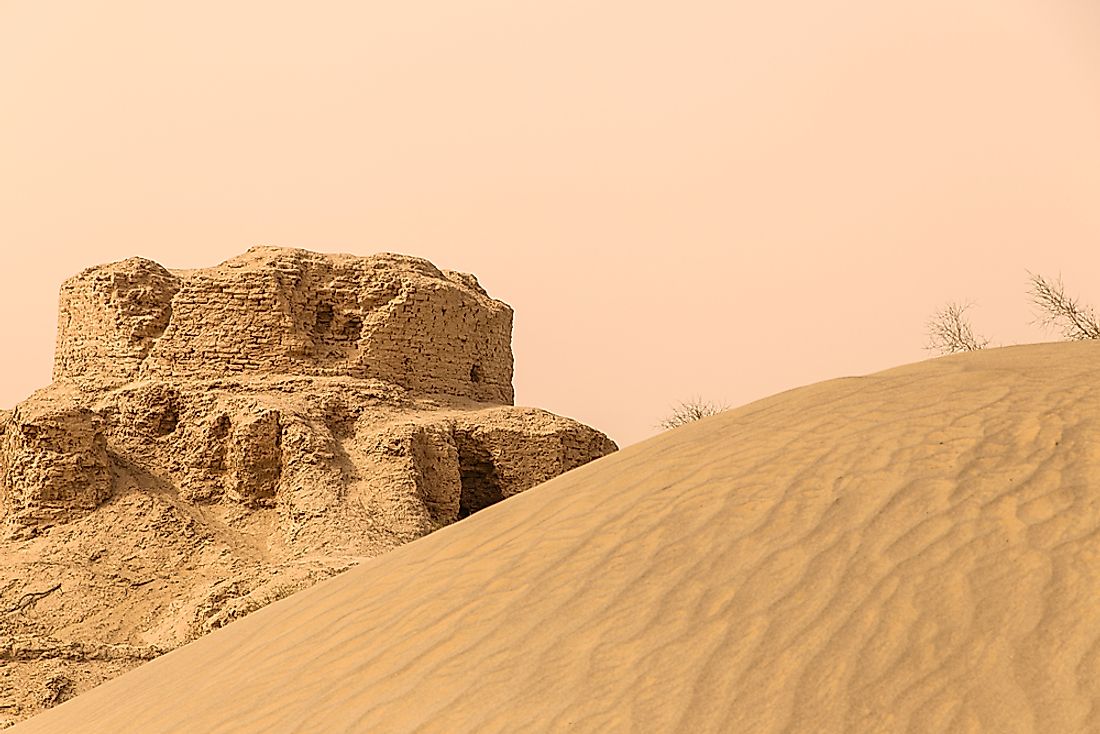Where Is The Lop Desert?

Description And Location
Also known as the Lop Depression, the Lop Desert is a desert located in China. The desert ranges all the way from Korla to the Tarim Basin which lies in China’s Xinjiang Uyghur Autonomous Region. The desert is quite unique in that it is almost perfectly flat. On the northwestern side lies Lake Bosten with an elevation which could be anywhere between 3,380 feet and 3,410 feet. The Lop Nur (or Lop Nor), a salt lake that is now largely dried up in China, lies in the southeast of the Lop Desert.
As stated earlier, the desert is largely flat although there are three depressions that are more depressed and might even form lakes were they to somehow fill with water. These depressions are the Lop Nor, Kara-Koshun, and the Taitema basins. All these basins were once lakes formed by the Tarim River and other rivers such as the Konque River. Due to the different locations that the Lop Nur was formed as a result of the occasional change of course by the Tarim River, the Lop Nur was also known as the “Wandering Lake.”
The climate in the desert is extremely dry. Past studies have shown that the annual precipitation is usually less than 20 millimeters. Recently, in 2008, the precipitation recorded was 31.2 millimeters. Equally, the temperatures are extremely high with temperatures of 122° F recorded. Recent studies in the annual evaporation show that it is at 2,901 millimeters.
As with most desert around the world, sandstorms are not entirely uncommon. The entire region is constantly affected by extreme sandstorms (known as burãns). The particles of sand blown by the wind add to the aggressiveness of the storms and also contribute to the formation of yardangs. As a result, the desert, unsurprisingly, the desert is abraded and eroded. Further, the constant sandstorms have affected river channels and also caused the death of several people in the past.
Habitat
Plant and animal life is scarce in the Lop Desert. Scientific expeditions in the past have only ever unearthed 36 plant species and only 127 species of animals. Of the plant species, all of them belong to only 13 families and 26 genera. Among the animal species, 23 of them were mammals, 91 species of birds, 7 reptile species, and only one amphibian.
This sparse composition is in stark contrast to how rich the region was. Archaeologist Sven Hedin, in his travels, observed a wide range of animals including the tiger and the wolf living there. All this diversity has long since disappeared. Even with the loss of diversity, the region is still among the remaining refuges of the wild Bactrian camel in the world.
The Lop Nor
There are several indications that the basin that is now known as Lop Nur was once a lake. Some of the evidence includes patches of dead tamarisks, salts-stained depressions with a lacustrine look, and other pieces of evidence. In past books, the lake is suggested to be of an immense size and that it used to be a salt marsh.











